Winston OBoogie
Well-known member
Seems to have helped in the other thread though.
3/ Added to the list of things to try in other circuits.
Seems to have helped in the other thread though.
3/ Added to the list of things to try in other circuits.
Gets weirder. The dedicated AC filament winding for the 6CG7 died in one. I scabbed in a new Hammond filament transformer. It only feeds the one tube. No buzz.....
I do note chasing other resistor noise, there's no place I can ground a grid without huge buzz.
So, crud from the DC heater circuit is coupling through the power transformer to the 6CG7's 6V3 winding?
Will "scabbing in" a separate 6V3 transformer fix the other 3 units too?
Never heard the term "scabbed in", I like it.
The problems are definitly more predictable with ac heathersI don't think I made that term up....gets used in construction over here, maybe?
The 6CG7 isn't what's polluted, and it makes the least sense that it's winding would have any effect, unless there's some sort of reflection of a reflection thing going on. Turn the master all the way down on any, they're quiet.
Taking some load off the PT?
None of this makes any sense.
Maybe I should convert one to fully AC heaters and see what happens. The leads are already twisted the whole path. Maybe I should add DC filament switcher? : )
I don't think I made that term up....gets used in construction over here, maybe?
The 6CG7 isn't what's polluted, and it makes the least sense that it's winding would have any effect, unless there's some sort of reflection of a reflection thing going on. Turn the master all the way down on any, they're quiet.
Maybe that too. Although I'd think that if you're not dealing with a regulator that drops out because there isn't enough in/out voltage margin, that wouldn't matter.Taking some load off the PT?
None of this makes any sense.
Maybe I should convert one to fully AC heaters and see what happens. The leads are already twisted the whole path. Maybe I should add DC filament switcher? : )
Now that you know how to create a unit without buzz, what about trying a cap across the AC of both heater windings. A cap would add C (obviously... der!) to the whole inductance and capacitance in that resonant circuit, push the offending frequencies down and out of your audio.
Try 1uF across both 6V3 AC coils.
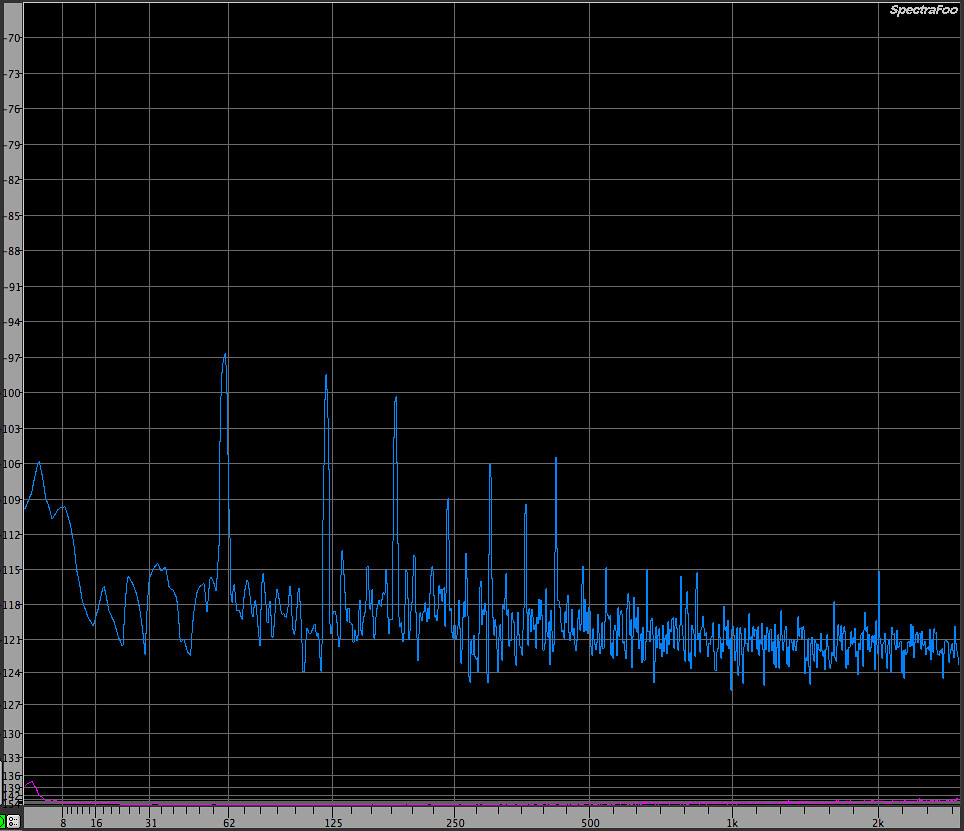
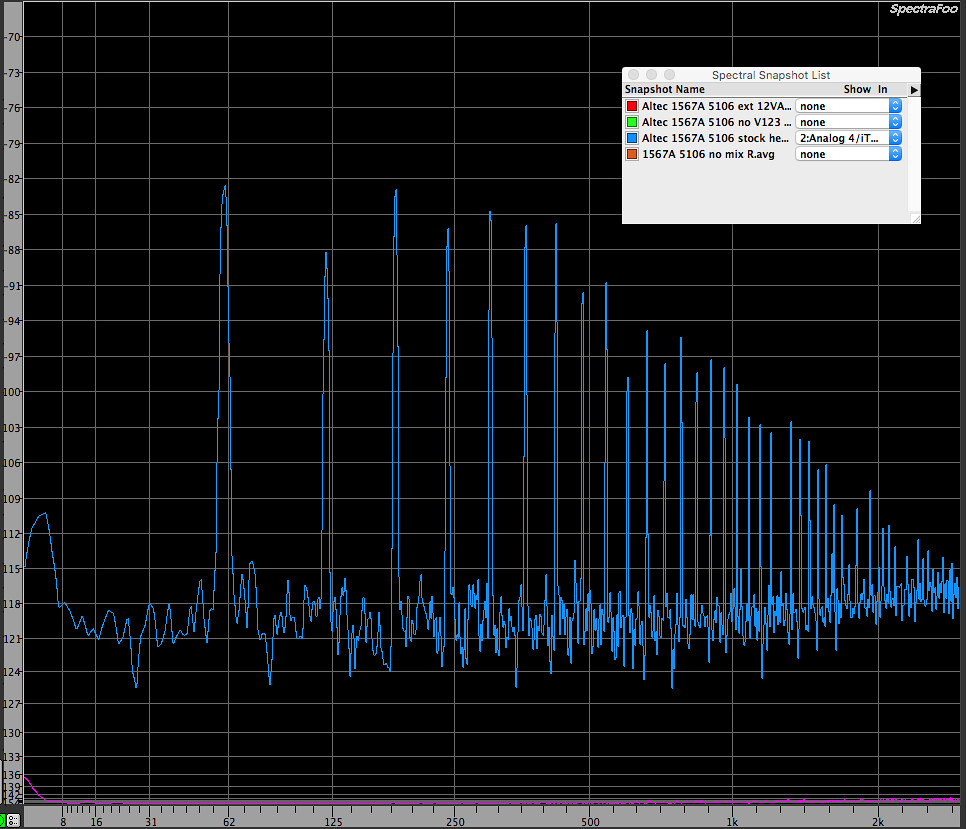
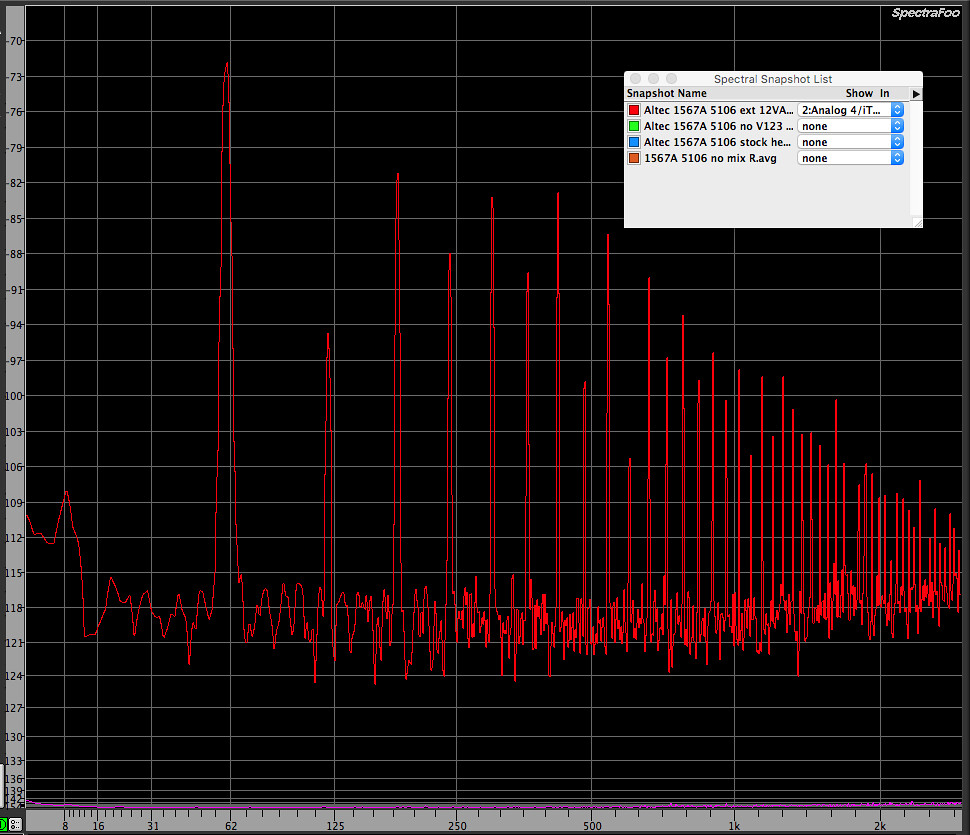
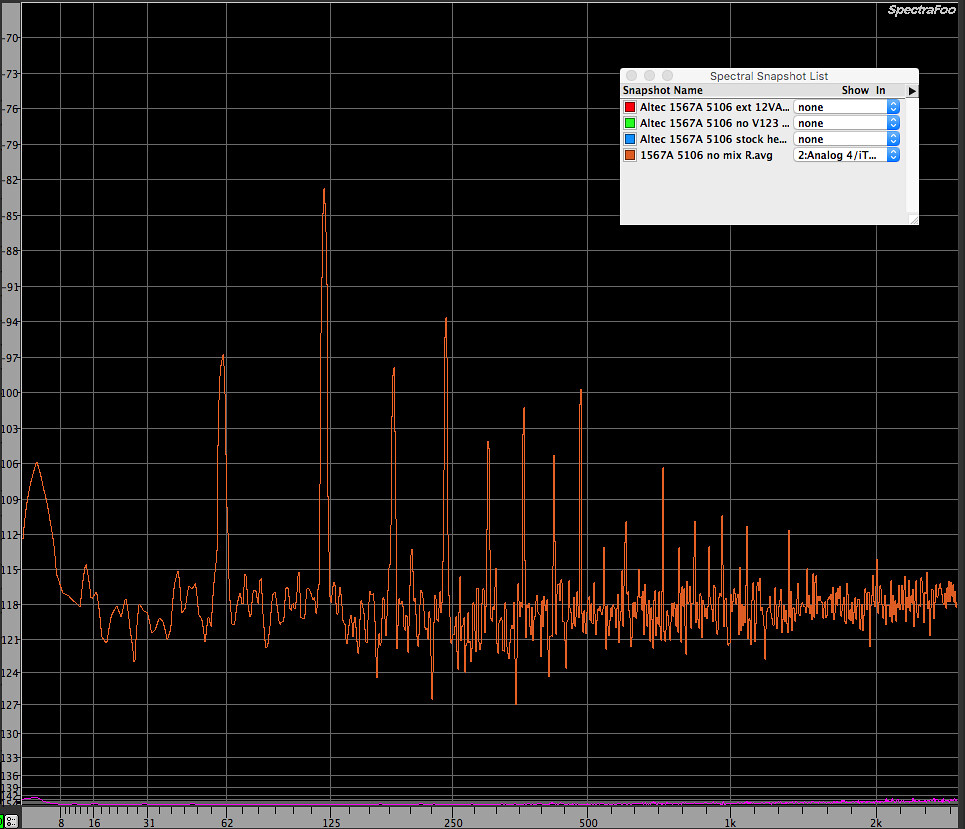
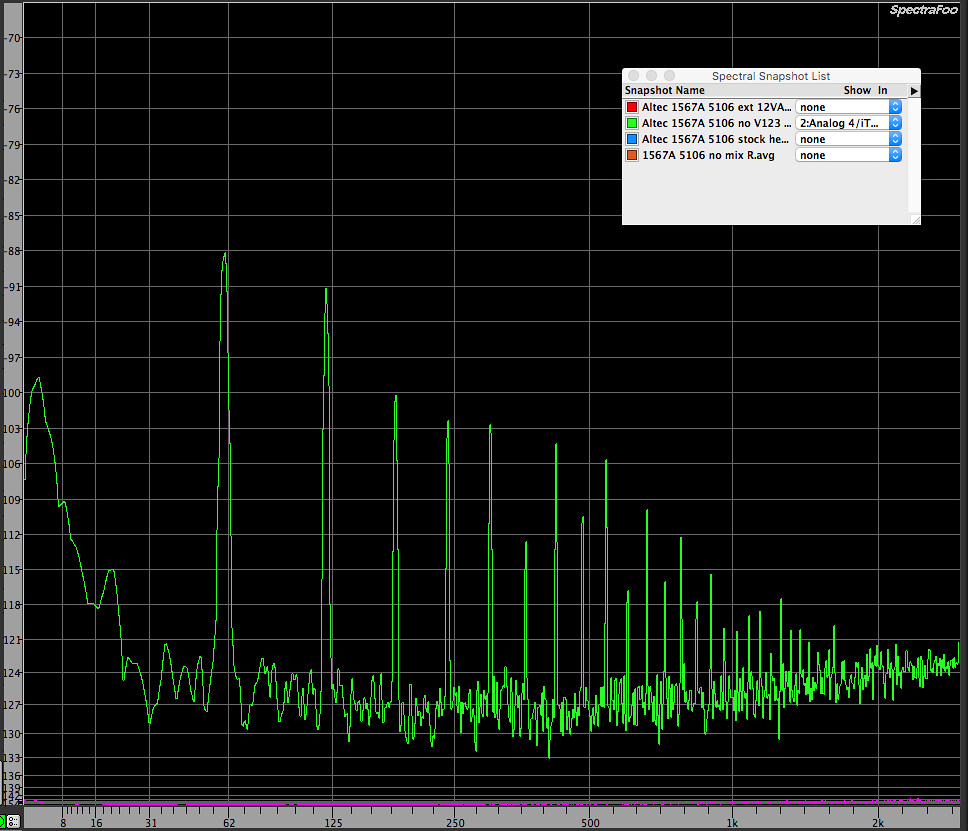
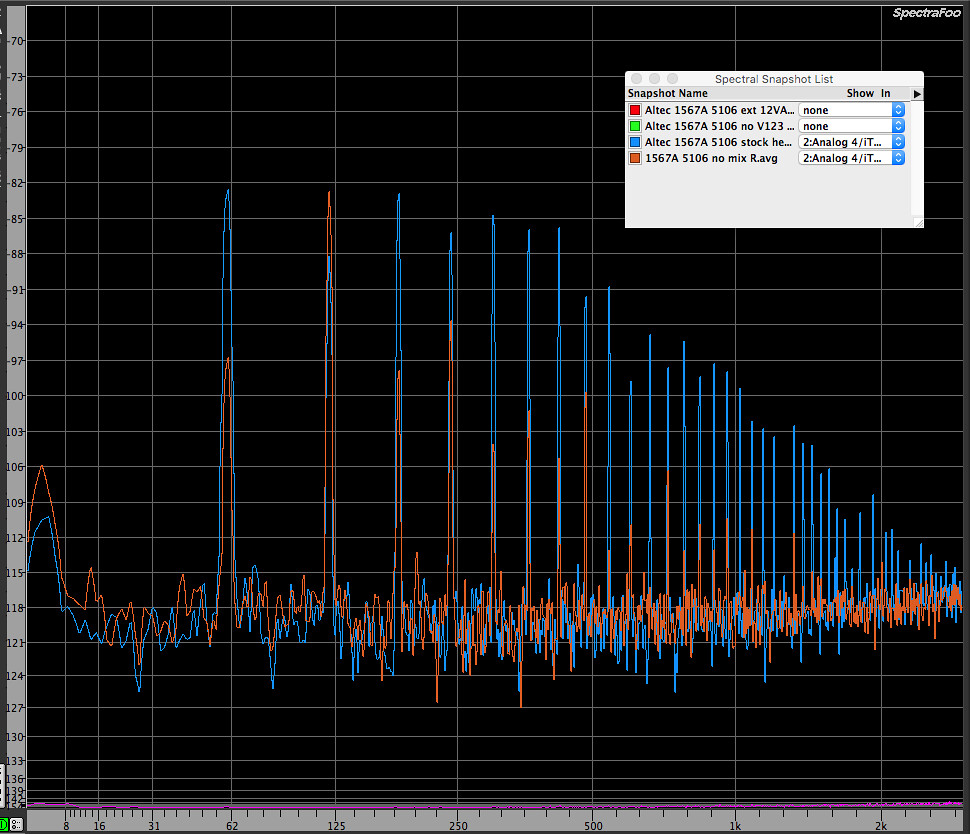
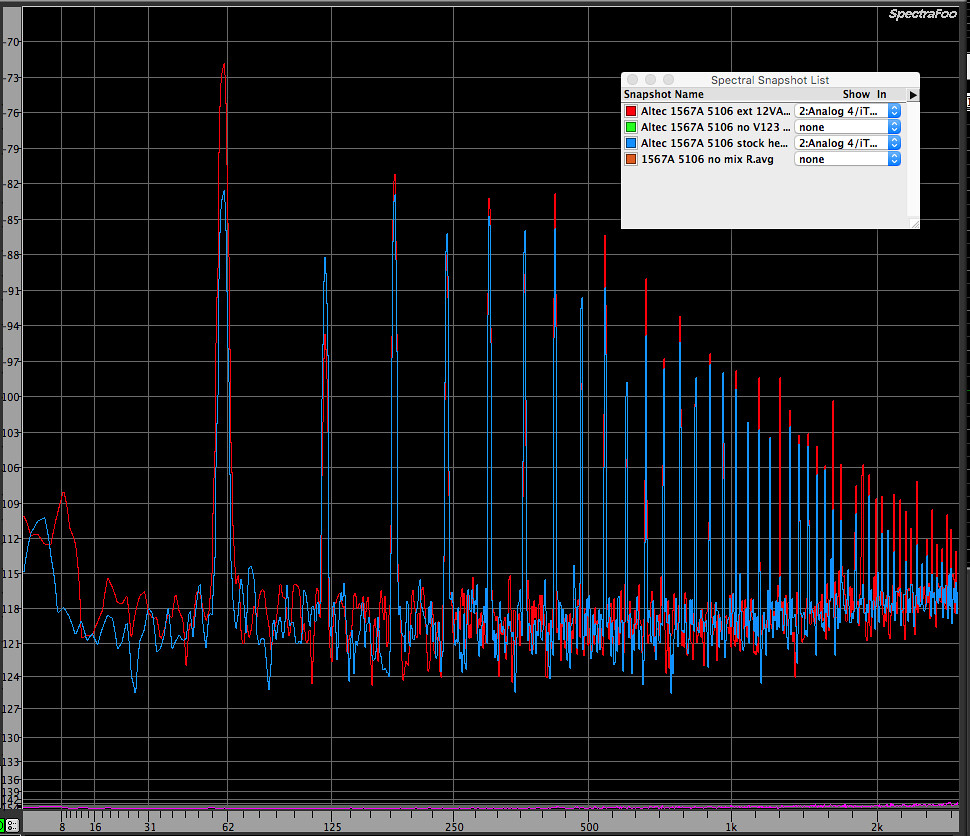
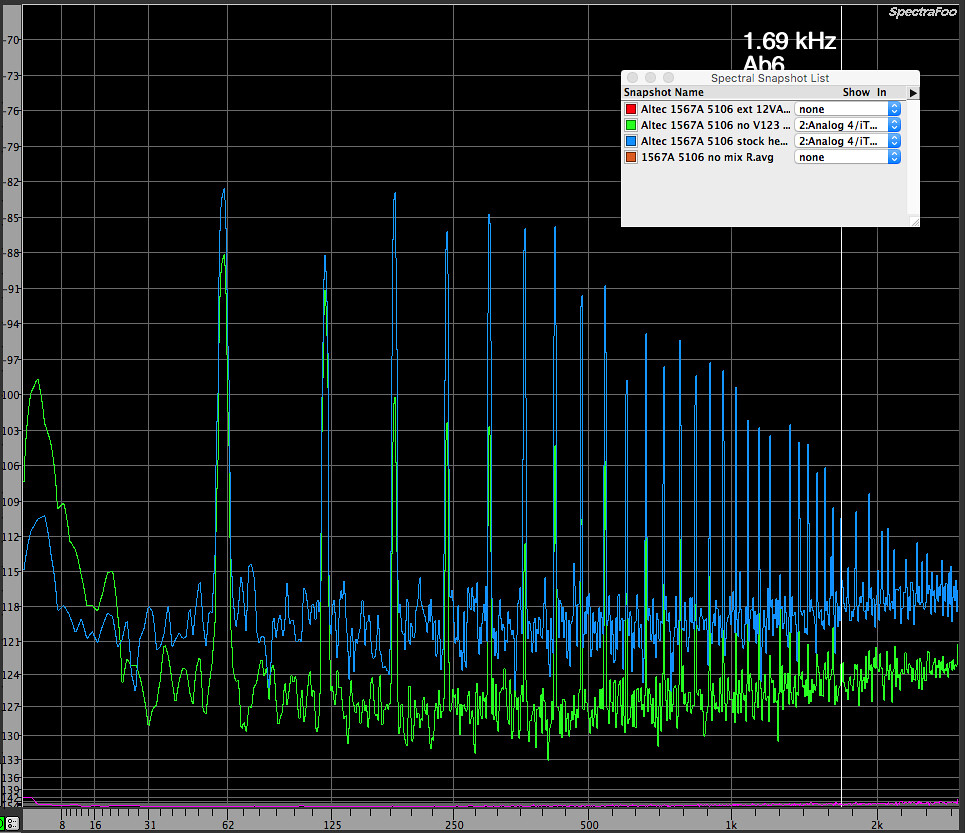
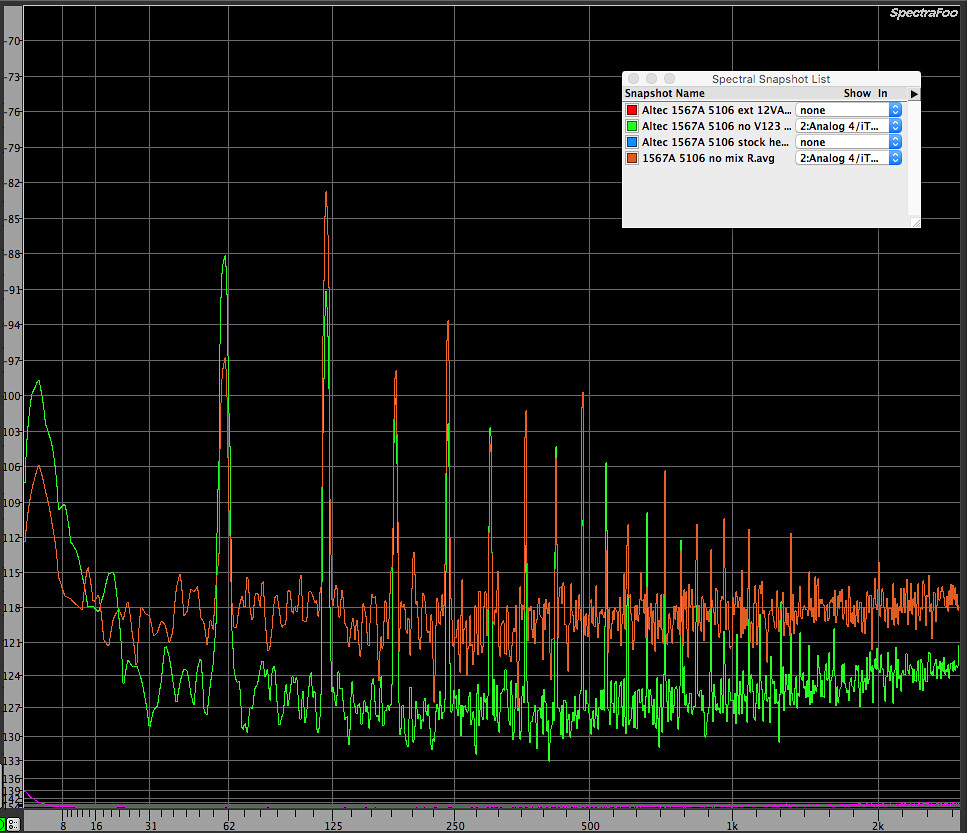
Maybe the scabbed in filament transformer has enough current then it's only a small board with diodes and a lm314 run 3 wires to it and bolt it to the chassis. Chassis could be a massive heatsink. You only really need it this clean on the input tubes also. Just a few ideas.
This is sounding like the power transformer is running in magnetic saturation! Contrary to popular belief, saturation (and the resulting lamination buzz and huge radiated magnetic field) is NOT caused by over-loading it's output, but by over-voltage on its primary side. Is your AC line voltage over 120 V? A common move to save money on power transformers is to operate them very close to magnetic saturation - sometimes a primary voltage increase to just 123 or 125 will put them into saturation (and they'll get hot even if there's no load on the secondary at all!). Overheating due to too much loading of a transformer secondary is caused only by too much load current and the DC resistances of the windings. It amazes many people when I explain that the strength of the magnetic field in a power transformer is the same, whether it has no load or a full load (it actually decreases very slightly under heavy loading). The field strength is determined only by the primary voltage and frequency. Saturation is also commonly caused by operating a 60 Hz transformer on 50 Hz!
When a power transformer saturates magnetically, the magnetic field literally squirts out of the transformer and it has a very "pulsey" character that often magnetically induces a "buzz" voltage in every wire near it. A good way to test for saturation is to power the unit from a Variac. If everything calms down if you reduce line voltage to say, 105 VAC, then you've got a saturation issue! I hope this little mini-tutorial helps!